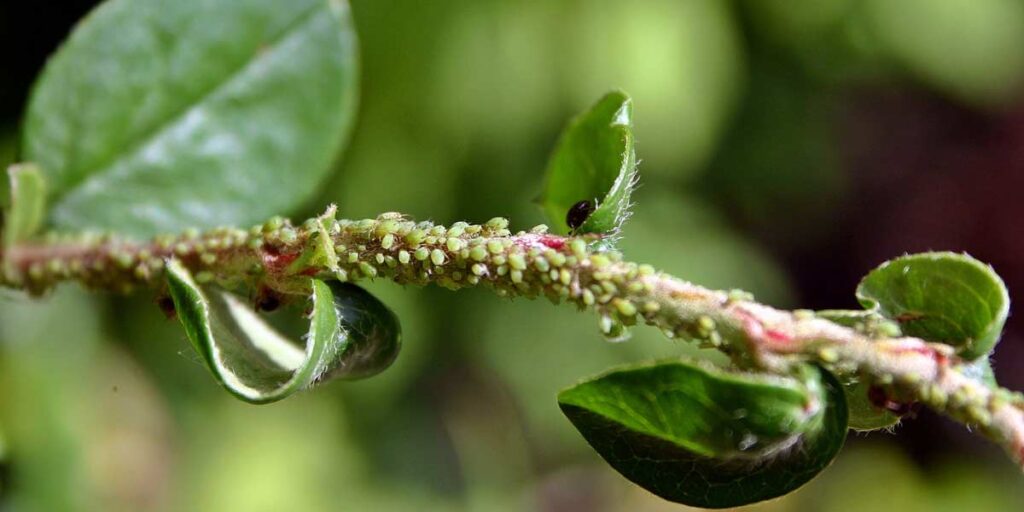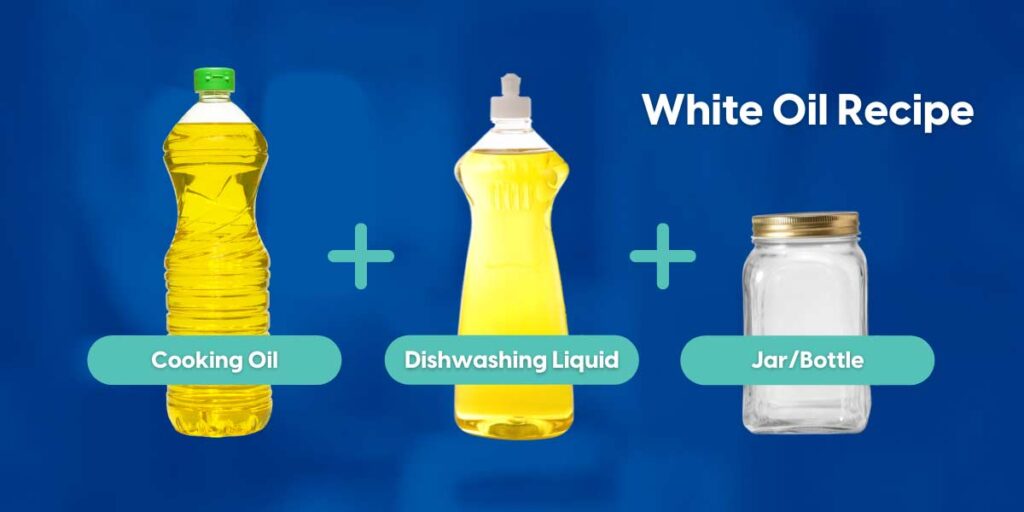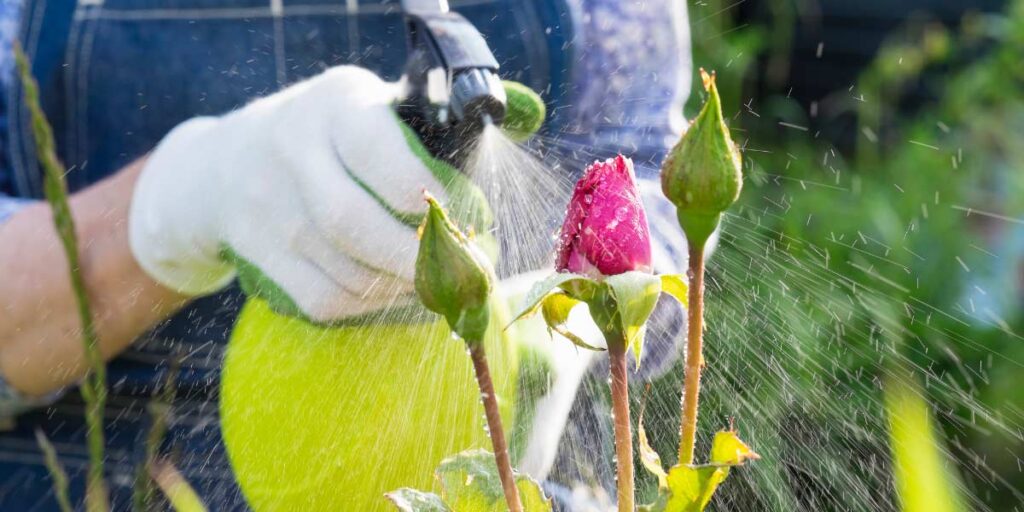


Cool, so now that you know how white oil works, it’s time to get started.
Grab an old glass jar or an empty bottle—make sure it’s clean. Add two cups of cooking oil and follow with around ¾ cup of dishwashing liquid. Shake vigorously. With any luck, the mixture should turn white—surprise, that’s why it’s called white oil!

Now, what you’ve just made is white oil concentrate. Do not—I repeat, do not apply this solution directly to your plants unless you want to damage the foliage. To start using your white oil, dilute it with water at a rate of one tablespoon of concentrate to every one litre of water.
To apply your white oil, pour the diluted mixture into either a spray bottle or a large plastic bucket. If you’re using a spray bottle, simply spray both sides of every leaf, and the stems of your plants, and the oil will work its magic. If you’ve opted for the bucket method, grab a disposable cloth and dip it in the mixture. Wipe every inch of your plant until an even coating has been achieved. The wiping method works well for tackling heavy infestations, as a wiping motion will physically remove the pests, while suffocating the ones left behind.
Reapply as necessary—likely every week or two. And in no time at all, your plants will be pest-free. How easy is that?

Our trusted Local Expert professional builders are standing by.
Click here to learn more or request a quote today!
Are you a business owner looking to build your service?
Apply now and become part of the Local Expert team today.